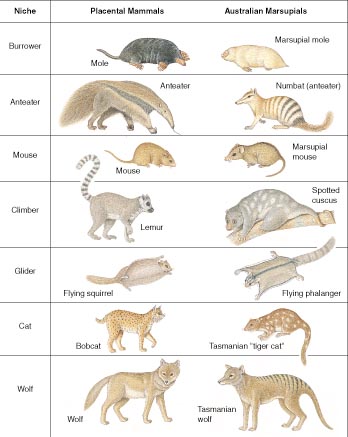93.WHAT ARE MARSUPIALS?
When European explorers visited the New World, they often brought back with them whatever they considered strange and new. Thus the South American opossum was brought back from Brazil in 1500, and Captain Cook in 1770 told about seeing kangaroos in Australia. Nobody in Europe had ever known about such creatures before—they were marsupials.
The marsupials are a separate order of animals. The name comes from the Greek word marsupion, which means “pouch.” What sets these animals apart is that their young, after they are born, live and are fed in a pouch on their mother’s body.
This is necessary because young marsupials are so tiny and helmless when they are born that they cannot take care of themselves. They do not even know how to eat. Even after they have grown to a fair size, young kangaroos and opossums run back to hide in their mother’s pouch when they are frightened.
Judging from the fossils found in rocks, marsupials were once common in all parts of the world. Today almost all of them are found in Australia and the nearby islands. The only other true marsupials are the various species of opossums which live in North and South America.
Australian marsupials range in size from tiny molelike creatures only a few inches long to the giant kangaroos. Some of them, such as the bandicoots, look like rabbits. Others, such as the wombats, look like beavers. Still others, such as the thylacines and the Tasmanian wolves, look like wolves.
They may live on the ground or dwell in the trees like monkeys. Some of the phalangers, which are one family of marsupials, can even glide from tree to tree like flying squirrels. The food of marsupials is quite varied. Some eat only vegetables, others are meat-eaters or insect eaters, and some eat anything they can find.



Leave a Reply